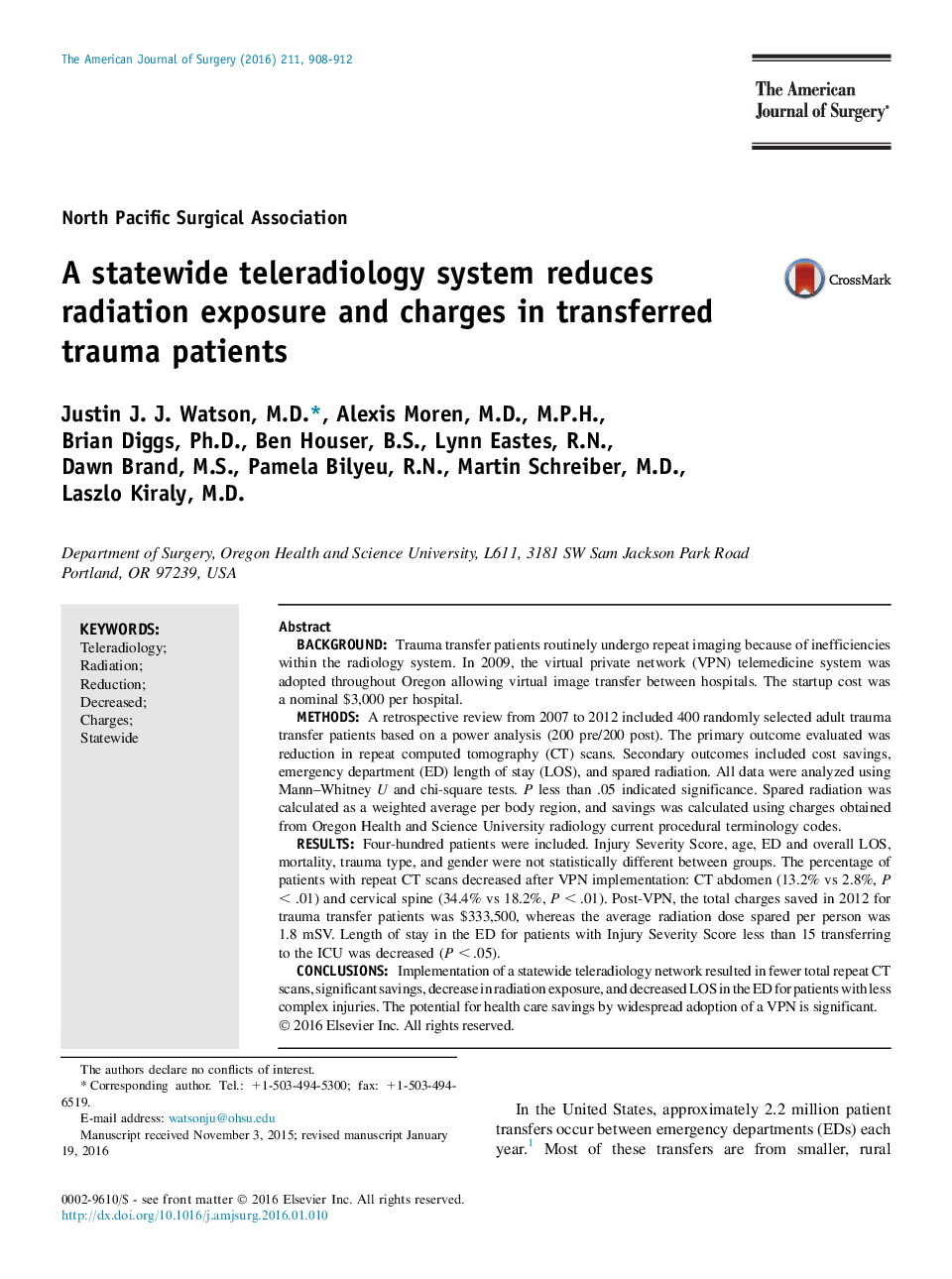| کد مقاله | کد نشریه | سال انتشار | مقاله انگلیسی | نسخه تمام متن |
|---|---|---|---|---|
| 6250576 | 1611483 | 2016 | 5 صفحه PDF | دانلود رایگان |
BackgroundTrauma transfer patients routinely undergo repeat imaging because of inefficiencies within the radiology system. In 2009, the virtual private network (VPN) telemedicine system was adopted throughout Oregon allowing virtual image transfer between hospitals. The startup cost was a nominal $3,000 per hospital.MethodsA retrospective review from 2007 to 2012 included 400 randomly selected adult trauma transfer patients based on a power analysis (200 pre/200 post). The primary outcome evaluated was reduction in repeat computed tomography (CT) scans. Secondary outcomes included cost savings, emergency department (ED) length of stay (LOS), and spared radiation. All data were analyzed using Mann-Whitney U and chi-square tests. P less than .05 indicated significance. Spared radiation was calculated as a weighted average per body region, and savings was calculated using charges obtained from Oregon Health and Science University radiology current procedural terminology codes.ResultsFour-hundred patients were included. Injury Severity Score, age, ED and overall LOS, mortality, trauma type, and gender were not statistically different between groups. The percentage of patients with repeat CT scans decreased after VPN implementation: CT abdomen (13.2% vs 2.8%, P < .01) and cervical spine (34.4% vs 18.2%, P < .01). Post-VPN, the total charges saved in 2012 for trauma transfer patients was $333,500, whereas the average radiation dose spared per person was 1.8 mSV. Length of stay in the ED for patients with Injury Severity Score less than 15 transferring to the ICU was decreased (P < .05).ConclusionsImplementation of a statewide teleradiology network resulted in fewer total repeat CT scans, significant savings, decrease in radiation exposure, and decreased LOS in the ED for patients with less complex injuries. The potential for health care savings by widespread adoption of a VPN is significant.
Journal: The American Journal of Surgery - Volume 211, Issue 5, May 2016, Pages 908-912
